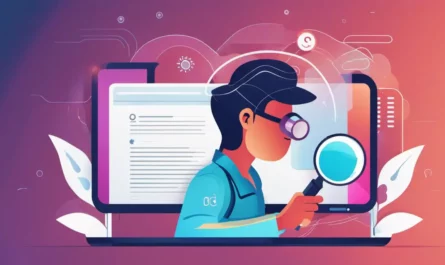In the fast-paced digital world we live in, developments in User Experience (UX) and Artificial Intelligence (AI) are redefining the ways in which people interact with technology. However, to truly appreciate the impact and potential of UX-focused AI, it is crucial to understand not only what these terms mean in isolation, but also how they coalesce to revolutionize our digital experiences. This knowledge journey begins by distinguishing between UX and AI, acquainting you with their unique definitions and functionalities. Here, you will delve into the new-age junction of UX and AI, perceiving their symbiotic relationship and the need for seamlessness in their integration.
Understanding UX and AI
Artificial Intelligence (AI) vs. User Experience (UX): Contrast and Correlation
In the ever-evolving realm of technology, two buzzwords often emerge that seem to define the trend of the day: User Experience (UX) and Artificial Intelligence (AI). Despite seeming poles apart, both constitute critical pillars that technopreneurs and businesses must consider when leveraging technology. But what differentiates the two? A clear understanding is pivotal in pioneering innovative solutions.
User Experience, or UX, directs its focus towards the user’s interaction with a product or service. Essentially, it refers to a person’s emotions and attitudes about using a particular product, system, or service. Consider it as the human-first way of designing products. Tech enthusiasts must bear this in mind: UX involves the comprehensive user interface (UI), design, graphics, and the interaction process. In essence, it’s all about making digital interaction seamless, fluid, and, above all, user-friendly.
Artificial intelligence (AI), on the other hand, is the simulation of human intelligence processes by machines. In simpler terms, it’s about making machines think and learn like us, humans. Core elements of AI include learning, reasoning, problem-solving, perception, and language understanding.
While AI automates repetitive tasks, makes prescriptive analysis, and performs complex calculations, it’s crucial not to undervalue the realm of UX. After all, even the most advanced AI systems require intuitive interfaces to impart these brilliant solutions to end-users.
There’s a thriving symbiosis between UX and AI. UX designs provide AI with the human touch needed to interact effectively with users, making sure the complex algorithms and advanced functionalities are delivered in an understandable and straightforward manner. Simultaneously, AI can enhance UX by personalizing interfaces and predicting user behavior, thereby catering to the individual needs and expectations of users.
AI tools used wisely can drastically enhance UX design processes. Concepts such as AI-driven testing can provide meticulous, data-driven accuracy that may surpass the capabilities of a human designer. This finely-tuned precision can aid UX designers in creating interfaces that appeal to their target demographic on a deeper, more personalized level.
However, it’s essential to note that while AI automates, UX cultivates. Even as businesses increasingly incorporate AI into their operations, it’s crucial to keep the UX in balance to succeed truly. Always remember that technology ultimately serves human needs and usability precedes the use of machines.
In conclusion, while AI and UX may seem like different worlds, understanding their distinction and interaction is key. Their intersection is where meaningful, human-centric designs meet revolutionary, intelligent automation—herein lies the future of technology.

Integrating UX with AI
As technology continues to evolve, the crucial interplay between User Experience (UX) and Artificial Intelligence (AI) becomes more evident. Implementing AI in the context of UX provides considerable benefits for both the tech-savvy early adopters and everyday users. But how does this interaction really occur in the world of technology?
To delve into this, it can be enlightening to examine the process of Machine Learning (ML), a subset of AI that’s particularly relevant to UX. ML systems utilize algorithms and statistical models to perform tasks and make predictions without explicit instruction. They learn and adapt based on user behavior, which subsequently enriches the UX by providing personalized experiences.
In this scenario, UX takes on a vital role by serving as the bridge between complex AI technologies and the end-user. For example, consider a voice-activated virtual assistant like Siri or Alexa. The capabilities of these AI technologies are impressive, integrating Natural Language Processing (NLP) and ML into their systems to deliver relevant responses. But without a well-designed UX to facilitate this interaction—the sound, the speed, the wait time—the advanced AI would likely flounder in real-world application.
On the other hand, AI can contribute to the development and refinement of UX design strategies. Take A/B testing, for instance, where AI-powered tools can automate and accelerate the testing process, swiftly analyzing user data to recommend the most effective design. Not only does this save time, but it also deepens our understanding of how users interact with different design elements.
However, blindly integrating AI into UX doesn’t guarantee success. There’s a critical balance to be struck here. If the AI technology is too complex, it can result in confusion and frustration, leading to a poor UX. Similarly, if the AI is too simplistic, it may not fulfill the user’s needs, again leading to dissatisfaction. It’s a sweet spot where AI complements UX, and not overshadows or underserves it, that tech enthusiasts and designers alike should aim for.
Looking ahead, the meeting point of UX and AI presents exciting challenges for the future of technology. With the advent of Augmented Reality (AR) and Virtual Reality (VR), the UX could become dramatically immersive, and AI could serve as the backbone of these sophisticated experiences. Consider VR-driven instruction, where AI can provide real-time feedback and adapt instructions to suit individual learning styles.
But it’s also important to remember that regardless of how advanced AI becomes, it can’t replace the human touch in understanding user’s emotions, emphatic design, or cultural nuances. The role of the UX designer will continue to be pivotal in this equation, integrating advanced technology into relatable, understandable, and accessible user experiences.
In essence, as AI expands its foothold in various applications, marrying its power with the user-centric approach of UX will result in solutions that are not only technologically advanced but also profoundly human-centric. Because at the end of the day, it’s all about the user — and enhancing their experience with intelligent, intuitive, and meaningful design.

Role of UX-focused AI in Problem-Solving
Diving into the depth of AI and UX, it’s vital to consider the ways in which a UX-focused AI contributes to problem-solving. As a tech enthusiast, sharpening your understanding of this interface can widen your horizon of utilizing AI for enhancing UX in your business venture or daily life.
Machine Learning (ML), an essential subfield of AI, plays a key role in enriching the UX. It aids in the prediction and personalization of user behavior by analyzing past user data, hence delivering them a seamless experience. This algorithm-based system aids in understanding the user’s preferences and paves the way for intuitive navigation and streamlined operations, effectively eradicating any existing friction points.
Furthermore, a well-designed UX is instrumental in creating effortless AI interactions. It can reduce the complexity of AI tools and make them more user-friendly. For instance, voice assistants like Siri or Alexa are prime examples of how UX simplifies AI interaction, allowing users to give verbal commands instead of navigating through various steps and buttons.
When we consider AI’s contribution to UX design strategies, A/B testing stands out prominently. AI accelerates this process by quickly processing user data, analyzing user preferences, and identifying the most effective design solution. Consequently, this interprets into an efficient user interface and elevates the overall user experience.
However, striking the right balance between AI complexity and user needs is crucial for realizing an effective UX. Overly complex AI systems can possibly confuse users or lead to privacy concerns. Hence, UX needs to effectively convey AI capabilities and security features to the users in an understandable manner.
Looking towards the future, the amalgamation of AI and UX will open an array of opportunities and challenges in technologies like Augmented Reality (AR) and Virtual Reality (VR). They would allow designers to create immersive experiences, making the interaction with digital products even more engaging.
At this juncture, it is essential to note that AI has limitations when it comes to empathic design and understanding cultural nuances. Despite increasing sophistication, AI is not yet capable of comprehending emotions with the same depth as humans. Thus, the human element, specifically, the role of the UX designer, remains pivotal in integrating advanced technology into user-centric experiences.
In sum, AI and UX together hold enormous potential to create technologically advanced and human-centric solutions. By bridging the gap between user needs and AI capabilities, UX-focused AI can significantly enhance the user experience and contribute to problem-solving on a much larger scale than ever before.

Challenges and Solutions in UX-focused AI
Deep-Diving into the Challenges: Implementing UX-focused AI
Stepping into the deeper insights of marrying UX and AI together, let’s delve into the underlying challenges that developers face. Realizing the inimitable potential of AI in enhancing UX, finding solutions to these issues has become crucial today.
The first hurdle is the innate complexity of AI technologies. AI applications are complex by nature and may not be comprehensible to general users without a clearly cut UX design. Put simply, the more complex an AI application, the more challenging it becomes to design an intuitive UX for it. This complexity issue extends to the implementation of Machine Learning (ML) models in UX as well. The key, therefore, lies in creating a UX design that simplifies and clarifies complex AI functions to users.
Another significant challenge is the general lack of understanding of user behavior. Despite AI’s profound capabilities, it cannot completely understand the nuances of human behavior, let alone predict it accurately. Designing a UX without full comprehension of user patterns can be an uphill task. Hence, implementing predictive design, a derivative of ML, can be a solution to this puzzle. By processing user data, predictive design can foresee user behavior and assist in crafting an intuitive and personalized UX.
The limitations of AI extend to understanding cultural nuances and empathic design. Emotional experiences and cultural behaviors differ vastly among humans, a phenomenon AI has not yet entirely grasped. This limitation makes UX design all the more significant in humanizing the AI interaction and making it more relatable to diverse user personas.
AI and UX in AR and VR technologies also present a unique set of challenges. While the potential of AI in these spaces is limitless, designing a UX for such immersive environments can be incredibly tricky. Developers must fully appreciate the novel user interactions these technologies bring, and prepare for the challenges that arise in integrating AI within these contexts.
Despite these challenges, the role of the UX designer remains vital in integrating advanced technology into user-centric experiences. A UX designer helps to bridge the gap between AI and the users, creating a seamless and intuitive interface. This aspect is where leveraging AI to aid in UX design strategies comes in handy. For instance, A/B testing powered by AI can provide invaluable insights into user preferences and behaviors, prompting more informed design decisions.
Indeed, the marrying of AI and UX presents its fair share of challenges. However, through creative problem-solving and a better understanding of user behavior, integrating advanced technology within befitting UX designs has the potential to truly revolutionize our interaction with technology.

Future Trends in UX-focused AI
The rise of voice user interfaces in future UX designs
The potential of AI in automating routine UX processes
Voice User Interfaces (VUI) are one of the newest developments in the UX/AI domain. There is an increasing trend towards integrating VUI across numerous platforms, providing users an optimal experience and making interactions more natural and conversational. VUIs significantly improve accessibility, opening tech use to an even broader population, and AI plays a central role in this development.
Data-driven designs, particularly AI application in A/B testings, empower UX designers with factual user behavioral data. Real-time user data gleaned from AI can be exceedingly useful in making informed design decisions. AI in A/B testing not only accelerates user experience optimization process but also eliminates guesswork, making designs highly effective and user-specific.
Combining biometric technology with AI can take UX to a different level. With biometric sensors, AI can gather precise data about emotional responses and physical reactions, providing UX designers with deeper insights into user behavior, and enabling empathic designs that resonate more deeply with users.
Despite immense possibilities, integrating AI within AR, VR technologies still poses significant challenges. Building intuitive, engaging UX within such immersive platforms require a deep understanding of user behavior and innovative application of AI. Ensuring security, data privacy, and ethical considerations while handling highly personal data is another area of concern.
AI offers a host of possibilities in automating routine UX tasks. Automation frees up designers from tedious, time-consuming chores and allows them to focus on more creative tasks. AI can create a predictive model of the user’s behavior, which can be used to automate routine design processes.
In conclusion, the future of UX is poised to be significantly influenced by emerging trends in AI. Successfully leveraging AI’s power to enhance UX, whether through predictive modeling, automation, or empathic design, promises a future where technology is at its user-friendly best, catering to individual needs.

The road ahead for UX-focused AI is teeming with innovative developments that promise to push the boundaries of technological advancements. As we witness remarkable breakthroughs such as anticipatory design and voice user interfaces, it is plain to see that UX-focused AI is on a trajectory to redefine the way we interact with digital interfaces. However, this journey is not without its hurdles, and understanding these challenges paired with their potential solutions accentuates the complexities and beauty of this field. By traversing the landscape of UX-focused AI, we are not only equipping ourselves to adapt to these technological evolutions, but also contributing to shaping a digital world receptive to user needs, preferences, and experiences.
Writio: Your AI Writing Wizard – Boost your blog or website with high-quality content and watch it rank on Google. This article was magically crafted by Writio!




